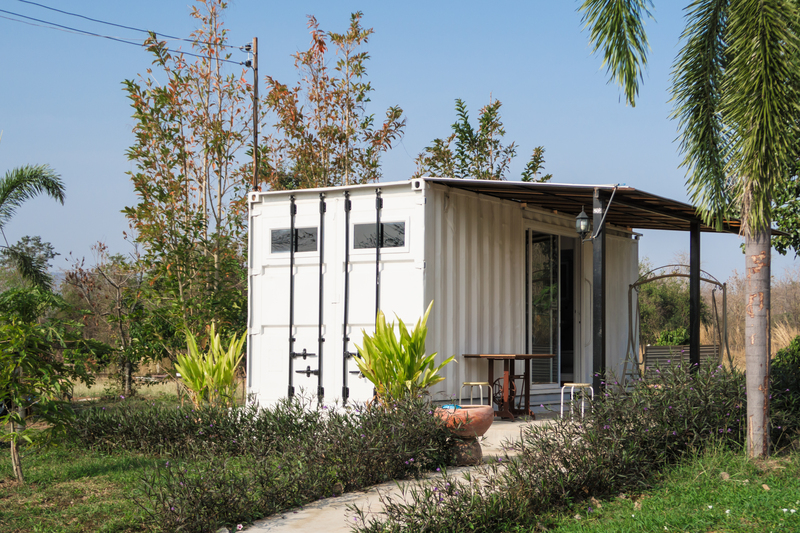As environmental concerns grow, more people are seeking ways to lead eco-friendly lifestyles. Transforming your living space into a sustainable paradise is a great start. Here are some practical tips to make your home more eco-conscious without compromising on comfort or aesthetics.
Why Go Green?
Living in an eco-conscious home is not only a trend but a necessary lifestyle shift. It reduces your carbon footprint, saves on utility bills, and fosters a healthier environment for you and the planet.
Environmental Benefits
- Reduces pollution and environmental waste.
- Conserves natural resources, including water and energy.
- Encourages biodiversity by reducing the demand for harmful industrial practices.
Economic Benefits
- Long-term reduction in energy and water bills.
- Increased property value as sustainable homes are in demand.
- Potential tax credits and incentives for green home improvements.

Energy Efficiency at Home
Focusing on energy efficiency is one of the best ways to create an eco-conscious home. Below are a few strategies to help reduce energy consumption:
Invest in Energy-Saving Appliances
Modern appliances are designed to use less energy and water without sacrificing performance. Look for the Energy Star label, which certifies that products meet high energy efficiency standards.
Switch to LED Lighting
LED bulbs consume up to 80% less electricity than traditional incandescent bulbs and last much longer. By making the switch, you save energy and money over time.
Implement Smart Home Technology
Smart home devices allow you to automate and optimize your energy use. Consider installing a smart thermostat that adjusts your home's heating and cooling based on your schedule, which can lead to significant savings.
Water Conservation Techniques
Water is a precious resource, and conserving it is vital for sustainability. Here are some tips for reducing water usage:
Install Low-Flow Fixtures
Low-flow faucets and showerheads reduce water usage without compromising water pressure. This simple upgrade can save thousands of gallons of water each year.
Fix Leaks Promptly
Leaky faucets and toilets can waste a surprising amount of water. Make it a habit to check for and repair leaks promptly to prevent unnecessary water waste and reduce your bill.
Use Rainwater Harvesting
Installing a rainwater collection system can provide water for irrigation and other non-potable uses, reducing your reliance on municipal water supplies.
Sustainable Materials and Furnishings
Choosing sustainable materials for your home and furnishings can significantly impact your environmental footprint. Here's how to make responsible choices:
Opt for Natural and Renewable Materials
Whenever possible, use materials like bamboo, cork, or reclaimed wood that regenerate quickly. These options are not only sustainable but also add unique character to your home.
Select Low-VOC Paints
Breathe easy by choosing paints with low volatile organic compound (VOC) levels. These eco-friendly options emit fewer toxins, contributing to better indoor air quality.
Invest in Durable Furniture
Quality over quantity applies when purchasing furniture. Invest in pieces that are built to last, reducing the need for frequent replacements that contribute to waste.
Waste Reduction at Home
Minimizing waste is crucial for sustainability. Implement these strategies to reduce waste in your home:
Embrace Recycling and Composting
Create designated spaces for recycling and composting in your home. Understanding your local recycling guidelines ensures you dispose of materials correctly.
Reduce, Reuse, Repair
- Reduce: Buy only what you need to minimize waste, especially Plastics.
- Reuse: Opt for reusable products, such as cloth napkins or glass storage containers.
- Repair: Fix broken items instead of discarding them; this reduces landfill waste and can often save money.
Mindful Purchasing
Be conscious of the products you buy. Choose items with minimal packaging and those that come from companies committed to sustainable practices.

Eco-Friendly Outdoors
Your home extends beyond its four walls. Creating a sustainable outdoor area is just as important:
Plant Native Species
Landscaping with native plant species reduces the need for water, fertilizers, and pesticides, as these plants are adapted to the local climate and soil conditions.
Utilize Organic Gardening Practices
Incorporating compost used from your kitchen waste as fertilizer helps to nourish your garden without toxic chemicals. Companion planting can also naturally deter pests.
Create a Pollinator-Friendly Space
Invite bees, butterflies, and other pollinators by cultivating a varied garden with diverse flowers. This supports local ecosystems and boosts biodiversity.
Conclusion: Crafting an Eco-Conscious Home
Building an eco-conscious home may seem like an extensive project, but every small step counts towards sustainability. By adopting these practices, you'll contribute positively to the planet while enjoying numerous personal benefits. Remember, sustainability is a journey, not a destination. Share these tips with family and friends and encourage others to adopt an environmentally friendly lifestyle for a better world.